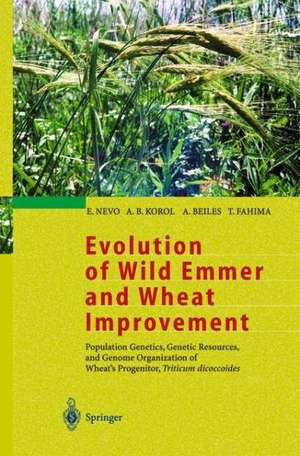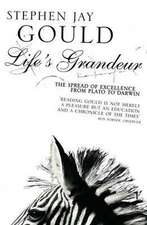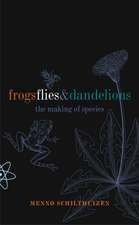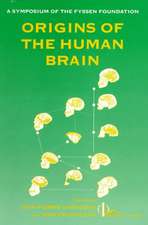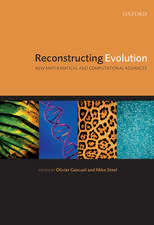Evolution of Wild Emmer and Wheat Improvement: Population Genetics, Genetic Resources, and Genome Organization of Wheat’s Progenitor, Triticum dicoccoides
Autor E. Nevo, A. B. Korol, A. Beiles, T. Fahimaen Limba Engleză Paperback – 29 noi 2010
Toate formatele și edițiile
| Toate formatele și edițiile | Preț | Express |
|---|---|---|
| Paperback (1) | 1044.62 lei 39-44 zile | |
| Springer Berlin, Heidelberg – 29 noi 2010 | 1044.62 lei 39-44 zile | |
| Hardback (1) | 1227.21 lei 6-8 săpt. | |
| Springer Berlin, Heidelberg – 28 ian 2002 | 1227.21 lei 6-8 săpt. |
Preț: 1044.62 lei
Preț vechi: 1374.50 lei
-24% Nou
Puncte Express: 1567
Preț estimativ în valută:
199.89€ • 218.00$ • 168.55£
199.89€ • 218.00$ • 168.55£
Carte tipărită la comandă
Livrare economică 21-26 aprilie
Preluare comenzi: 021 569.72.76
Specificații
ISBN-13: 9783642075124
ISBN-10: 3642075126
Pagini: 392
Ilustrații: XXII, 364 p. 69 illus., 25 illus. in color.
Dimensiuni: 155 x 235 x 21 mm
Greutate: 0 kg
Ediția:Softcover reprint of hardcover 1st ed. 2002
Editura: Springer Berlin, Heidelberg
Colecția Springer
Locul publicării:Berlin, Heidelberg, Germany
ISBN-10: 3642075126
Pagini: 392
Ilustrații: XXII, 364 p. 69 illus., 25 illus. in color.
Dimensiuni: 155 x 235 x 21 mm
Greutate: 0 kg
Ediția:Softcover reprint of hardcover 1st ed. 2002
Editura: Springer Berlin, Heidelberg
Colecția Springer
Locul publicării:Berlin, Heidelberg, Germany
Public țintă
ResearchDescriere
This book is about the contribution to evolutionary theory and agricultural technology of one of humankind's most dramatic imitations of the evolu tionary process, namely crop domestication, as exemplified by the progenitor of wheat, Triticum dicoccoides. This species is a major model organism and it has been studied at the Institute of Evolution, University of Haifa, since 1979. The domestication by humans of wild plants to cultivated ones during the last ten millennia is one of the best demonstrations of evolution. It is a process that has been condensed in time and advanced by artificial rather than natural selection. Plant and animal domestication revolutionized human cultural evolution and is the major factor underlying human civilization. A post-Pleistocene global rise in temperature following the ice age, i.e., climatic-environmental factors, may have induced the expansion of econom ically important thermophilous plants and in turn promoted complex forag ing and plant cultivation. The shift from foraging to steady production led to an incipient agriculture varying in time in various part of the world. In the Levant, agriculture developed out of an intensive specialized exploitation of plants and animals. Natufian sedentism, followed by rapid population growth and resource stress, induced by the expanding desert, coupled with available grinding technology, may have triggered plant domestication.
Cuprins
1 Domestication of Wheats.- 2 Wild Emmer, Triticum dicoccoides, Wheat Progenitor: Origin and Evolution.- 3 Centers of Origin and Diversity of Wild Ancestors and Crop Improvement.- 4 Macrogeographic Population Genetic Studies of Triticum dicoccoides in the Fertile Crescent, Israel and Turkey: Allozyme and DNA Polymorphisms.- 5 Microgeographic Studies of Allozyme and DNA Polymorphisms in Triticum dicoccoides.- 6 Genetic Variation in Agronomic Traits.- 7 Genome Structure of Triticum dicoccoides.- 8 Genetic Mapping of Agronomically Important Traits.- 9 Molecular Evolution and Ecological Stress in Wild Emmer Wheat at Regional and Local Scales: Natural Selection in Action.- 10 Conclusions and Prospects.- References.
Caracteristici
The complete book on the wild progenitor of most cultivated wheats
Includes supplementary material: sn.pub/extras
Includes supplementary material: sn.pub/extras
